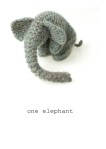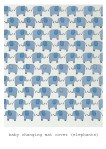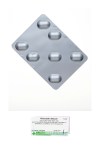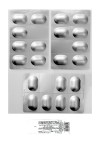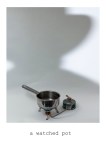Out of all the topics covered in this course, which felt most comfortable to you? Why?
Part four, where we had to look at and analyse other people’s pictures was probably the most comfortable bit of the course for me. My original degree (in English Literature and Film & TV Studies, at Glasgow way back in the 80s) had introduced me to critical theory; it was not a great stretch to look at still photographs from the position of someone trying to establish a meaning beyond the simple surface one of “this is a view,” “this is Uncle Albert,” “this is me at the pyramids” and instead to try and tease out what it is that they mean, culturally. I also think that this has fed into how I look at other people’s photographs, whether they are in books or on the wall at exhibitions or encountered in the wild as part of my day to day life.
Near the time when I started this course, iI went a few times to see the Shirley Baker show at the Photographer’s gallery; last week, I went for a second time to see the Roger Mayne pictures in the same venue. Where I had looked at Baker’s pictures from the outside, relating what they depicted to my own experience of childhood and of the north of England and memory, I was aware that I was looking at Mayne’s pictures trying to identify his thought process as he lined up objects in relation to the frame in some of his wider photographs of the Park View estate in Sheffield; I looked at the slide show from the 1964 Milan Trienalle and found myself analysing how the five streams of colour pictures combined to produce meaning as much as I was thinking about what the showed. Parallel to my development as a photographer, there is a related development as a viewer. The two feed off one another.
This is, I think, quite important and can only become more so, as i process not only what photographs I want to take but also what I want to do – to say, rather – with them.
.
Did you discover anything completely new to you? What was it?
Before I started the course, I had had little experience of making pictures in a studio. The closest I had come to this had been some of the exercises for part four (lighting) of TAoP, but these had been mostly concerned with the technical aspects of working with artificial light, rather than using a studio set-up to construct meaning. I have never even sold anything on ebay, in part because I have never got round to making good pack shots for sale items.
So, the work I did l for assignment 2 and assignment 5 was a much greater departure for me than it might at first seem. Likewise, the self-portraits that form the centre-piece of assignment 3 required the creation of a space where I could take head and shoulder self-portraits with a plain backdrop. All this was achieved up in the attic where I have my study. I learnt a lot, I think, and intend to go on and learn more.
Then, putting the resulting pictures together – either by assembling them into individual composite images or arranging them in series – seems to offer a way to create a more controlled meaning for my work than would be possible with streams of “reality pictures”. I would appear to have found a parallel method to augment the diary sequences that were also produced during my work for part three.
Which area enabled you to come closest to finding your personal voice?
As mentioned above, taking photographs in a controlled, studio situation (and sometimes combining them into composite images) is opening up a new area of photography that I would like to examine further. However, this has yet to be fully assimilated into what I am still learning to call “my practice”. So, the area of the course which saw the biggest change in what I am doing with photography was probably Part Three where I think I took several steps towards its stated aim, of putting more of myself into the picture.
In particular, the streams of diary pictures I took on trips seem to describe my experience of being in different places, with different people much better than previous series of pictures taken in similar circumstances. They are less concerned with technique (and equipment) and more focused on the place i was moving through and the people I was travelling with or meeting. They also allowed me a space where I could try out things I had noticed and liked in other photographer’s work. Finally, I may have found a way of maintaining a photographic sketchbook!
A few weeks ago, I jotted down in my notebook a phrase to describe what I think I may now be doing: “I take photographs to locate myself within time and within change.” I realise this all sounds quite portentous (and indeed the spell check just suggested “pretentious” – ha!), but amongst it all I hope there are things I can begin to identify as characteristic: humour, a certain distance, an interest in the world around me as I move through it…
Which area seemed furthest from who you want to be as a photographer? Why?
To find something I have no desire to pursue further, I’d need to go back to my strong negative reaction to the extreme pictorialism of Geoffrey Crewdson’s tableaux.
I find his pictures as unconvincing in their attempt to control every aspect of their of their meaning as the Victorian story pictures by the likes of Rejlander and Henry Peach Robinson which seems to be their direct ancestors. Equally Victorian, they seem melodramatic in their approach – using heightened colour and ‘strangeness’ to signify a preferred emotional reading that leaves no space for any form of intellectual analysis – and in no way seem rooted in the society and the world which we inhabit. They are static and – ultimately, i feel – a little shallow.
I think the engagement with society found in the constructed realities of Jeff Wall (in The Mimic, say) or Cindy Sherman’s series of Untitled Film Stills is much closer to where I would like to go with my photography.
Of course, I will go and see Crewdson’s upcoming show at the Photographers’ Gallery, but it will take a lot more to convince that there is much more to them than their (admittedly highly accomplished) surface!
What were the main things you learnt? Were there any epiphany moments?
There were, I think, three things that were central to what I “got” from Context and Narrative:
- It doesn’t have to be ‘true’! I am not taking pictures that will be used as evidence in any court; rather I am making pictures with a machine; they may show traces of the things I choose to point my camera at, but they also show traces of that process. I can use pictures to say subjective things, but I cannot say simply, “This is definitely a pipe”.
- Picking up on some of the exercises from Part 2 as well as a re-reading of Dyer’s The Ongoing Moment, I have moved closer to a position of seeing that photography has a greater affinity for poetry than it does for prose. Alec Soth puts it well in this quote from the 2006 Deutsche Börse Photography Prize catalogue: “I see poetry as the medium most similar to photography […] What is essential is the ‘voice’ (or ‘eye’) and the way this voice pieces together fragments to make something tenuously whole and beautiful.” To that I would add that poetry does not have to be etherial or ‘soft’; it is possible to use it to engage with the society we inhabit and to try and tease out stuff that has meaning now, and hopefully in the future as well. And this is much more to do with making images rhyme with one another or to provoke associations than it is to illustrate poems.
- Two years ago my thoughts on what constituted “good” photography were based on things I had absorbed while I was growing up; somehow I had stopped actively seeking out what was happening now and as a result my idea of what constituted “cutting edge” photography was getting increasingly blunt. Now, I think I have a much better idea of what people who are working today are doing and am beginning to make a parallel move forward in my own work. Before starting with the OCA, I may not quite have entered the 21st century photographically, but I certainly am making an effort to do so now!
None of this came to me in the blinding flash of epiphany, instead, it was a steady accumulation over the course of the module. As described in my posts detailing what I was doing with assignment 5, I felt each section of the course built on the previous ones with ideas developing and changing as I moved (horribly slowly) forward. And of course, it is possible that the slowness was essential to this process.
But now, I really do need to speed up a bit…
Will you return to any of the assignments from this course at a later date? Did you feel as if you were on the cusp of anything?
I hope so! I have already committed to having another go at the still life that forms the heart of the final assignment.
For this assessment, I have reworked both of Assignments 1 and 2 and, having found a way to address the problems I had with assignment 1, would like to take that one a bit further towards being a completed work. Assignment 2 is finished really, but has allowed me to find a working method – specimen photographs of personal objects taken under controlled circumstances, compiled into larger compositions – which I am sure I will use again.
Taking objects and turning them into photographic ‘scrapbooks’ is something I would like to try with – amongst other things – the stuff you collect over the course of a trip away from home, which could then be used to augment further series of diary pictures (something else I’d like to carry on doing from time to time) or to catalogue the clothes worn by my daughter since her birth and providing a record of the way she has grown over the past four years.
Assignment 3 has gone as far as I really want to take it photographically but, when I have time, I would like to work on using it as the basis of a web application that could cycle through the full 32,400 combinations of my self-portrait. I am rusty with javascript and php but it shouldn’t be beyond me to something in this line. On a number of occasions now, I have been frustrated by my inability to go much beyond a very straightforward presentation of a number of photographs on a page or in a basic slideshow; I would like to create something a bit more presentationally complex from time to time and this would be a good project to experiment with.
As for being on the cusp of something, I think Garry’s comment towards the end of our final tutorial – “You’ve turned into a conceptual artist” – encapsulates nicely my development during this module. On a first reading, Identity and Place looks like it will cover many of the same areas (and draw its examples from many of the same photographers) as context and Narrative, but with more emphasis on looking out at other people rather than in at myself.It will be a challenge not to fall back into simply recording the surface of what I see but I hope I will be able to find strategies to get round this and work in a way that acknowledges the context that links me and the subjects that I am making pictures of. Let’s see…

